Categories are not mutually exclusive. These groupings arose from the days when requests for a particular reprint might include "and related papers."
[Some browsers may drop special characters or parts of equations in PDF files. If you notice blank squares or equation misalignment, use Acrobat Reader to faithfully display symbols and equation formatting in the publication.]
Clinical Theory and Practice
168. --- (1997) Credentialed persons, credentialed knowledge. Clinical Psychology: Science and Practice, 4, 91-98.
151. --- (1992) Needs (Murray, 1938) and state-variables (Skinner, 1938). Psychological Reports, 70, 407-450.
135. --- (1987). Theory and practice: Reflections of an academic clinician. In E. F. Bourg, R. J. Bent, J. E. Callan, N. F. Jones, J. McHolland & G. Stricker (Eds.), Standards and evaluation in the education and training of professional psychologists (pp. 7-23). Norman, OK: Transcript Press.
134. --- (1987). Foreword. In J. N. Butcher (Ed.), Computerized psychological assessment. New York: Basic Books, Inc.
131. --- (1986). Psychology: Does our heterogeneous subject matter have any unity? Minnesota Psychologist, 35(Summer), 3-9.
129. --- (1986). Trait language and behaviorese. In T. Thompson & M. D. Zeiler (Eds.), Analysis and integration of behavioral units (pp. 315-334). Hillsdale, NJ: Erlbaum.
127. --- (1984). Radical behaviorism and mental events: Four methodological queries. The Behavioral and Brain Sciences, 7, 563-564.
Reprinted: 1988, in A. C. Catania and S. Harnad (Eds.), The selection of behavior: The operant behaviorism of B. F. Skinner: Comments and consequences (pp. 192-193). New York: Cambridge University Press.
099. --- (1973). Why I do not attend case conferences. In #97 Psychodiagnosis: Selected papers (pp. 225-302). Minneapolis: University of Minnesota Press.
092. --- (1972). Second-order relevance. American Psychologist, 27, 932-940.
058. Meehl, P. E., Schofield, W., Glueck, B. C., Studdiford, W. B., Hastings, D. W., Hathaway, S. R., & Clyde, D. J. (1962). Minnesota-Ford Pool of Phenotypic Personality Items, August 1962 Edition. Minneapolis: University of Minnesota.
057. --- (1962). Psychopathology and purpose. In P. Hoch & J. Zubin (Eds.), The future of psychiatry (pp. 61-69). New York: Grune and Stratton.
Reprinted: 1991, in Meehl, Selected philosophical and methodological papers (pp. 265-271; C. A. Anderson and K. Gunderson, Eds.). Minneapolis: University of Minnesota Press.
055. --- (1961). Logic for the clinician. [Review of book by T. R. Sarbin, R. Taft, & D. E. Bailey, Clinical inference and cognitive theory]. Contemporary Psychology, 6, 389-391.
052. Glueck, B. C., Heistad, G. T., & Meehl, P. E. (1960). Approaches to the quantitative analysis of clinical assessment. American Psychiatric Association District Branches Publication No. 1 (pp. 202-212). Washington, DC: American Psychiatric Association.
051. --- (1960). The cognitive activity of the clinician. American Psychologist, 15, 19-27.
Reprinted: 1973, in #97 Psychodiagnosis: Selected papers (pp. 117-134). Minneapolis: University of Minnesota Press.
047. --- (1959). Some ruminations on the validation of clinical procedures. Canadian Journal of Psychology, 13, 102-128.
Reprinted: 1973, in #97 Psychodiagnosis: Selected papers (pp. 90-116). Minneapolis: University of Minnesota Press.
2006, in #184 A Paul Meehl Reader: Essays on the practice of scientific psychology (pp. 271-290). (N.G. Waller, L.J. Yonce, W.M. Grove, D. Faust, & M.F. Lenzenweger, Eds.). Mahwah, NJ: Erlbaum.
033. --- (1954). Comment on "Analyzing the clinical process." Journal of Counseling Psychology, 1, 207-208.
032. --- (1954). Clinical versus statistical prediction: A theoretical analysis and a review of the evidence. Minneapolis: University of Minnesota Press.
Reprinted with new Preface, 1996, by Jason Aronson, Northvale, NJ, and in 2013 by Echo Point Books
008. Meehl, P. E., & McClosky, H. (1947). Ethical and political aspects of applied psychology. Journal of Abnormal and Social Pychology, 42, 91-98.
Psychotherapy
137. --- (1988). Foreword. In D. N. Wiener, Albert Ellis, passionate skeptic. New York: Praeger.
121. --- (1981). Comment on Ellis's reply. Rational Living, 16, 41-42.
120. --- (1981). Ethical criticism in value clarification: Correcting cognitive errors within the client's-not the therapist's-framework. Rational Living, 16, 3-9.
090. --- (1972). Specific genetic etiology, psychodynamics and therapeutic nihilism. International Journal of Mental Health, 1, 10-27.
Reprinted: 1973, in #97 Psychodiagnosis: Selected papers (pp. 182-199). Minneapolis: University of Minnesota Press.
2006, in #184 A Paul Meehl Reader: Essays on the practice of scientific psychology (pp. 193-206). (N.G. Waller, L.J. Yonce, W.M. Grove, D. Faust, & M.F. Lenzenweger, Eds.). Mahwah, NJ: Erlbaum.
071. --- (1966). Psychologists' opinions as to the effects of holding five of Ellis' "Irrational Ideas" (Report No. PR-66-7). Minneapolis: University of Minnesota, Research Laboratories of the Department of Psychiatry.
063. --- (1965). Discussion of Eysenck's "The effects of psychotherapy." International Journal of Psychiatry, 1, 156-157.
054. --- (1960). Treatment of guilt-feelings. In 1957 Symposium of the American Catholic Psychological Association (pp. 34-41). New York: Fordham University.
046. --- (1959). Some technical and axiological problems in the therapeutic handling of religious and valuational material. Journal of Counseling Psychology, 6, 255-259.
034. --- (1955). Psychotherapy. Annual Review of Psychology, 6, 357-378.
008. Meehl, P. E., & McClosky, H. (1947). Ethical and political aspects of applied psychology. Journal of Abnormal and Social Pychology, 42, 91-98.
Psychoanalysis
164. --- (1995) [Psychoanalysis is not yet a science: Comment on Shevrin.] Journal of the American Psychoanalytic Association, 43, 1015-1023.
158. --- (1993) If Freud could define psychoanalysis, why can't ABPP? Psychoanalysis and Contemporary Thought, 16, 299-326.
124. --- (1983). Subjectivity in psychoanalytic inference: The nagging persistence of Wilhelm Fliess's Achensee question. In J. Earman (Ed.), Minnesota studies in the philosophy of science: Vol. X, Testing scientific theories (pp. 349-411). Minneapolis: University of Minnesota Press.
Reprinted: 1991, in Meehl, Selected philosophical and methodological papers (pp. 284-337; C. A. Anderson and K. Gunderson, Eds.). Minneapolis: University of Minnesota Press. 1994, Psychoanalysis and Contemporary Thought, 17, 3-82.
085. --- (1970). Some methodological reflections on the difficulties of psychoanalytic research. In M. Radner & S. Winokur (Eds.), Minnesota studies in the philosophy of science: Vol. IV. Analyses of theories and methods of physics and psychology (pp. 403-416). Minneapolis: University of Minnesota Press.
Reprinted: 1973, Psychological Issues, 8, 104-115.
1991, in Meehl, Selected philosophical and methodological papers (pp. 272-283; C. A. Anderson and K. Gunderson, Eds.). Minneapolis: University of Minnesota Press.
Case Studies
114. Malmquist, C. P., & Meehl, P. E.(1978). Barabbas: A study in guiltridden homicide. The International Review of Psycho-Analysis, 5, 149-174.
011. --- (1947). Schizophrenia, catatonic form. In A. H. Burton & R. E. Harris (Eds.), Case histories in clinical and abnormal psychology (pp. 71-83). New York: Harper.
Minnesota Multiphasic Personality Inventory (MMPI)
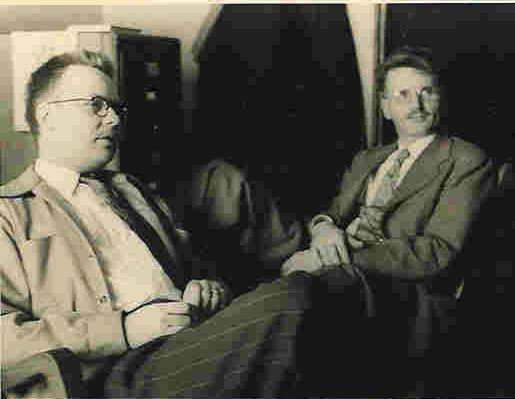
133. Dahlstrom, W. G., Meehl, P. E., & Schofield, W. (1986). Starke Rosecrans Hathaway. American Psychologist, 41, 834-835.
117. Golden, R., & Meehl, P. E. (1979). Detection of the schizoid taxon with MMPI indicators. Journal of Abnormal Psychology, 88, 217-233.
093. --- (1972). A critical afterword. In I. I. Gottesman & J. Shields, Schizophrenia and genetics: A twin study vantage point (pp. 367-416). New York: Academic Press.
091. --- (1972). Reactions, reflections, projections. In J. N. Butcher (Ed.), Objective personality assessment: Changing perspectives (pp. 131-189). New York: Academic Press.
079. Meehl, P. E., Lykken, D. T., Burdick, M. R., & Schoener, G. R. (1969). Identifying latent clinical taxa, III. An empirical trial of the normal single-indicator method, using MMPI Scale 5 to identify the sexes (Report No. PR-69-1). Minneapolis: University of Minnesota, Research Laboratories of the Department of Psychiatry.
078. --- (1969). Comments on the invasion of privacy issue. In J. N. Butcher (Ed.), MMPI: Research developments and clinical applications (pp. 273-278). New York: McGraw-Hill.
053. Meehl, P. E., & Dahlstrom, W. G. (1960). Objective configural rules for discriminating psychotic from neurotic MMPI profiles. Journal of Consulting Psychology, 24, 375-387.
048. --- (1959). A comparison of clinicians with five statistical methods of identifying MMPI profiles. Journal of Counseling Psychology, 6, 102-109.
039. --- (1956). Wanted--a good cookbook. American Psychologist,11, 263-272.
Reprinted 1973, with the title "Problems in the actuarial characterization of a person," in H. Feigl and M. Scriven (Eds.), Minnesota Studies in the Philosophy of Science, Vol. 1: The foundations of science and the concepts of psychology and psychoanalysis (pp. 205-222), Minneapolis: University of Minnesota Press.
1973, in #97 Psychodiagnosis: Selected papers (pp. 63-80). Minneapolis: University of Minnesota Press.
2006, in #184 A Paul Meehl Reader: Essays on the practice of scientific psychology (pp. 249-262). (N.G. Waller, L.J. Yonce, W.M. Grove, D. Faust, & M.F. Lenzenweger, Eds.). Mahwah, NJ: Erlbaum.
026. Gough, H. G., McClosky, H., & Meehl, P. E. (1952). A personality scale for social responsibility. Journal of Abnormal and Social Psychology, 47, 73-80.
024. Hathaway, S. R., & Meehl, P. E. (1951, July). The Minnesota Multiphasic Personality Inventory. In Military Clinical Psychology, Section IX (pp. 71-111). Department of the Army, Technical Manual,TM8-242. [Excerpted version published as "Psychiatric implications of code types." In G. S. Welsh & W. G. Dahlstrom (Eds.), Basic readings on the MMPI in psychology and medicine (pp. 136-144). Minneapolis: University of Minnesota Press, 1956.]
023. Gough, H. G., McClosky, H., & Meehl, P. E. (1951). A personality scale for dominance. Journal of Abnormal and Social Psychology, 46, 360-366.
020. Hathaway, S. R., & Meehl, P. E. (1951). An atlas for the clinical use of the MMPI. Minneapolis: University of Minnesota Press. [Not available as a reprint]
019. --- (1950). Using the Minnesota Multiphasic Personality Inventory in counseling. St. Paul: Advisement and Guidance Section, Vocational Rehabilitation and Education Division, Veterans Administration.
018. --- (1950). Configural scoring. Journal of Consulting Psychology, 14, 165-171.
012. McKinley, J. C., Hathaway, S. R., & Meehl, P. E. (1948). The Minnesota Multiphasic Personality Inventory: VI. The K scale. Journal of Consulting Psychology, 12, 20-31.
010. Meehl, P. E. (1947). Minnesota Multiphasic Inventory [outline of presentation]. In Fifth Annual Industrial Relations Conference Report (pp. 3-5). Minneapolis: University of Minnesota, Center for Continuation Study.
007. Meehl, P. E. & Hathaway, S. R. (1946). The K factor as a suppressor variable in the Minnesota Multiphasic Personality Inventory. Journal of Applied Psychology, 30, 525-564.
006. Meehl, P. E. (1946). Profile analysis of the Minnesota Multiphasic Personality Inventory in differential diagnosis. Journal of Applied Psychology, 30, 517-524.
004. --- (1945). An investigation of a general normality or control factor in personality testing. Psychological Monographs, 59(4, Whole No. 274).
001. Meehl, P. E. (1945). The dynamics of "structured" personality tests. Journal of Clinical Psychology, 1, 296-303.
Reprinted with Prefatory Comment, 1971, in L. D. Goodstein & R. I. Lanyon (Eds.), Readings in personality assessment (pp. 245-253). New York: Wiley.
Hedonic Capacity
175. --- (2001) Primary and secondary hypohedonia. Journal of Abnormal Psychology, 110, 188-193.
136. --- (1987). 'Hedonic capacity' ten years later: Some clarifications. In D. C. Clark & J. Fawcett (Eds.), Anhedonia and affect deficit states (pp. 47-50). New York: PMA Publishing.
106. --- (1975). Hedonic capacity: Some conjectures. Bulletin of the Menninger Clinic, 39, 295-307.
Reprinted: 1987, in D. C. Clark & J. Fawcett (Eds.), Anhedonia and affect deficit states (pp. 33-45). New York: PMA Publishing.
Schizophrenia
156. --- (1993) The origins of some of my conjectures concerning schizophrenia. In L. J. Chapman, J. P. Chapman, & D. C. Fowles (Eds.), Progress in experimental personality and psychopathology research (pp. 1-10). New York: Springer.
145. --- (1990). Toward an integrated theory of schizotaxia, schizotypy, and schizophrenia. Journal of Personality Disorders, 4, 1-99.
143. --- (1990). Schizotaxia as an open concept. In A. I. Rabin, R. Zucker, R. Emmons, & S. Frank (Eds.), Studying persons and lives (pp. 248-303). New York: Springer.
140. --- (1989). Schizotaxia revisited. Archives of General Psychiatry, 46, 935-944.
117. Golden, R., & Meehl, P. E. (1979). Detection of the schizoid taxon with MMPI indicators. Journal of Abnormal Psychology, 88, 217-233.
111. Hanson, D. R., Gottesman, I. I., & Meehl, P. E. (1977). Genetic theories and the validation of psychiatric diagnoses: Implications for the study of children of schizophrenics. Journal of Abnormal Psychology, 86, 575-588.
094. --- (1972). Clinical issues. In S. S. Kety & S. Matthysse (Eds.), Prospects for research on schizophrenia. M.I.T. Neuroscience Research Program Bulletin,10(No. 4), 377-380.
093. --- (1972). A critical afterword. In I. I. Gottesman & J. Shields, Schizophrenia and genetics: A twin study vantage point (pp. 367-416). New York: Academic Press.
090. --- (1972). Specific genetic etiology, psychodynamics and therapeutic nihilism. International Journal of Mental Health, 1, 10-27.
Reprinted: 1973, in #97 Psychodiagnosis: Selected papers (pp. 182-199). Minneapolis: University of Minnesota Press.
2006, in #184 A Paul Meehl Reader: Essays on the practice of scientific psychology (pp. 193-206). (N.G. Waller, L.J. Yonce, W.M. Grove, D. Faust, & M.F. Lenzenweger, Eds.). Mahwah, NJ: Erlbaum.
086. --- (1971). High school yearbooks: A reply to Schwarz. Journal of Abnormal Psychology, 77, 143-148.
Reprinted: 1973, in #97 Psychodiagnosis: Selected papers (pp. 174-181). Minneapolis: University of Minnesota Press.
2006, in #184 A Paul Meehl Reader: Essays on the practice of scientific psychology (pp. 31-36). (N.G. Waller, L.J. Yonce, W.M. Grove, D. Faust, & M.F. Lenzenweger, Eds.). Mahwah, NJ: Erlbaum.
061. --- (1964). Manual for use with checklist of schizotypic signs (Report No. PR-73-5). Minneapolis: University of Minnesota, Research Laboratories of the Department of Psychiatry.
059. --- (1962). Schizotaxia, schizotypy, schizophrenia. American Psychologist, 17, 827-838.
Reprinted: 1973, in #97 Psychodiagnosis: Selected papers (pp. 135-155). Minneapolis: University of Minnesota Press.
Memo Meehl to Lykken (1966-67). Problems of strategy in research on schizophrenia.
Memo Meehl to Garmezy (1965). Collecting MMPI profiles on parents of your schizophrenic sample.
Behavior Genetics
112. Golden, R., & Meehl, P. E. (1978). Testing a single dominant gene theory without an accepted criterion variable. Annals of Human Genetics London, 41, 507-514.
111. Hanson, D. R., Gottesman, I. I., & Meehl, P. E. (1977). Genetic theories and the validation of psychiatric diagnoses: Implications for the study of children of schizophrenics. Journal of Abnormal Psychology, 86, 575-588.
109. --- (1977). Specific etiology and other forms of strong influence: Some quantitative meanings. Journal of Medicine and Philosophy, 2, 33-53.
Reprinted: 2006, in #184 A Paul Meehl Reader: Essays on thepractice of scientific psychology (pp. 175-191). (N.G. Waller, L.J. Yonce, W.M. Grove, D. Faust, & M.F. Lenzenweger, Eds.). Mahwah, NJ: Erlbaum, 2006.
105. --- (1974/75). Genes and the unchangeable core. VOICES: The art and science of psychotherapy,10, 25-35.
093. --- (1972). A critical afterword. In I. I. Gottesman & J. Shields, Schizophrenia and genetics: A twin study vantage point (pp. 367-416). New York: Academic Press.
090. --- (1972). Specific genetic etiology, psychodynamics and therapeutic nihilism. International Journal of Mental Health, 1, 10-27.
Reprinted: 1973, in #97 Psychodiagnosis: Selected papers (pp. 182-199). Minneapolis: University of Minnesota Press.
2006, in #184 A Paul Meehl Reader: Essays on the practice of scientific psychology (pp. 193-206). (N.G. Waller, L.J. Yonce, W.M. Grove, D. Faust, & M.F. Lenzenweger, Eds.). Mahwah, NJ: Erlbaum.
Psychologist Training and Credentialing
168. --- (1997) Credentialed persons, credentialed knowledge. Clinical Psychology: Science and Practice, 4, 91-98.
158. --- (1993) If Freud could define psychoanalysis, why can't ABPP? Psychoanalysis and Contemporary Thought, 16, 299-326.
092. --- (1972). Second-order relevance. American Psychologist, 27, 932-940.
087. --- (1971). A scientific, scholarly, nonresearch doctorate for clinical practitioners: Arguments pro and con. In R. R. Holt (Ed.), New horizon for psychotherapy: Autonomy as a profession (pp. 37-81). New York: International Universities Press.
072. Committee on Scientific and Professional Aims of Psychology. (1967). The scientific and professional aims of psychology. American Psychologist, 22, 49-76.
062. --- (1965). Let's quit kidding ourselves about the training of clinical psychologists. In R. D. Wirt (Ed.), Professional education in clinical psychology (Mimeo). Minneapolis: University of Minnesota. [Reprint revised as #87]
030. Bird, C., Clark, K. E., & Meehl, P. E. (1954). Relationships between objective and oral examinations in psychology. In R. E. Eckert & R. J. Keller (Eds.), A university looks at its program. Minneapolis: University of Minnesota Press.
009. Bird, C., Heron, W. T., Meehl, P. E., & Paterson, D. G. (1947). The foreign language requirement for the Ph.D. American Psychologist, 2, 136-138.
Standards
168. --- (1997) Credentialed persons, credentialed knowledge. Clinical Psychology: Science and Practice, 4, 91-98.
072. Committee on Scientific and Professional Aims of Psychology. (1967). The scientific and professional aims of psychology. American Psychologist, 22, 49-76.
027. APA Committee on Test Standards. (1952). Technical recommendations for psychological tests and diagnostic techniques: Preliminary proposal. American Psychologist, 7, 461-475.
Clinical vs. Actuarial Prediction


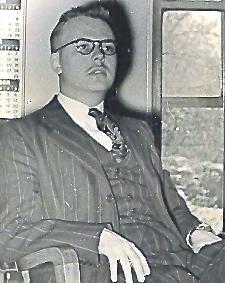
167. Grove, W. M., & Meehl, P. E. (1996) Comparative efficiency of informal (subjective, impressionistic) and formal (mechanical, algorithmic) prediction procedures: The clinical-statistical controversy. Psychology, Public Policy, and Law, 2, 293-323.
Reprinted: 2006, in #184 A Paul Meehl Reader: Essays on the practice of scientific psychology (pp. 291-320). (N.G. Waller, L.J. Yonce, W.M. Grove, D. Faust, & M.F. Lenzenweger, Eds.). Mahwah, NJ: Erlbaum.
155. Dawes, R. M., Faust, D., & Meehl, P. E. (1993) Statistical prediction versus clinical prediction: Improving what works. In G. Keren & C. Lewis (Eds.), A handbook for data analysis in the behavioral sciences: Methodological issues (pp. 351-367). Hillsdale, NJ: Lawrence Erlbaum.
138. Dawes, R. M., Faust, D., & Meehl, P. E. (1989). Clinical versus actuarial judgment. Science, 243, 1668-1674.
Reprinted: 2002, in T. Gilovich, D. Griffin, & D. Kahneman (Eds.), Heuristics and biases: The psychology of intuitive judgment (pp. 716-729). New York: Cambridge University Press.
132. --- (1986). Causes and effects of my disturbing little book. Journal of Personality Assessment, 50, 370-375.
075. --- (1967). What can the clinician do well? In D. N. Jackson & S. Messick (Eds.), Problems in human assessment (pp. 594-599). New York: McGraw-Hill.
Reprinted: 1973, in #97 Psychodiagnosis: Selected papers (pp. 165-173). Minneapolis: University of Minnesota Press, 1973.
064. --- (1965). Seer over sign: The first good example. Journal of Experimental Research in Personality, 1, 27-32.
051. --- (1960). The cognitive activity of the clinician. American Psychologist, 15, 19-27.
Reprinted: 1973, in #97 Psychodiagnosis: Selected papers (pp. 117-134). Minneapolis: University of Minnesota Press.
048. --- (1959). A comparison of clinicians with five statistical methods of identifying MMPI profiles. Journal of Counseling Psychology, 6, 102-109.
043. --- (1957). When shall we use our heads instead of the formula? Journal of Counseling Psychology, 4, 268-273.
Reprinted: 1958, in H. Feigl, M. Scriven, & G. Maxwell (Eds.), Minnesota studies in the philosophy of science. Vol. II: Concepts, theories, and the mind-body problem (pp. 498-506). Minneapolis: University of Minnesota Press. 1973,
in #97 Psychodiagnosis: Selected papers (pp. 81-89). Minneapolis: University of Minnesota Press. 2006,
in #184 A Paul Meehl Reader: Essays on the practice of scientific psychology (pp. 263-269). (N.G. Waller, L.J. Yonce, W.M. Grove, D. Faust, & M.F. Lenzenweger, Eds.). Mahwah, NJ: Erlbaum,.
041. --- (1956). Symposium on clinical and statistical prediction (with C. C. McArthur & D. V. Tiedeman). Journal of Counseling Psychology, 3, 163-173.
039. --- (1956). Wanted--a good cookbook. American Psychologist,11, 263-272.
Reprinted 1973, with the title "Problems in the actuarial characterization of a person," in H. Feigl and M. Scriven (Eds.), Minnesota Studies in the Philosophy of Science, Vol. 1: The foundations of science and the concepts of psychology and psychoanalysis (pp. 205-222), Minneapolis: University of Minnesota Press.
1973, in #97 Psychodiagnosis: Selected papers (pp. 63-80). Minneapolis: University of Minnesota Press.
2006, in #184 A Paul Meehl Reader: Essays on the practice of scientific psychology (pp. 249-262). (N.G. Waller, L.J. Yonce, W.M. Grove, D. Faust, & M.F. Lenzenweger, Eds.). Mahwah, NJ: Erlbaum.
038. --- (1956). Clinical versus actuarial prediction. In Proceedings of the 1955 Invitational Conference on Testing Problems (pp. 136-141). Princeton: Educational Testing Service.
033. --- (1954). Comment on "Analyzing the clinical process." Journal of Counseling Psychology, 1, 207-208.
032. --- (1954). Clinical versus statistical prediction: A theoretical analysis and a review of the evidence. Minneapolis: University of Minnesota Press.
Reprinted with new Preface, 1996, Northvale, NJ: Jason Aronson. 2013 by Echo Point Books
Learning Theory
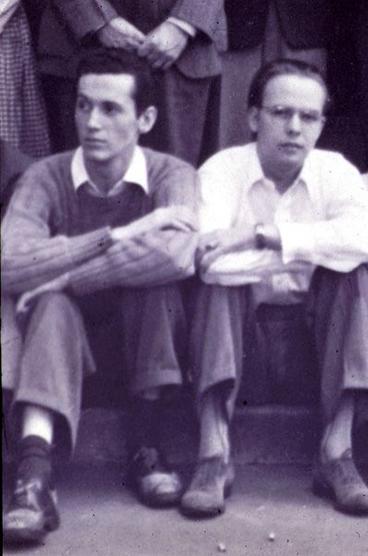
151. --- (1992) Needs (Murray, 1938) and state-variables (Skinner, 1938). Psychological Reports, 70, 407-450.
031. MacCorquodale, K., & Meehl, P. E. (1954). E. C. Tolman. In W. K. Estes, S. Koch, K. MacCorquodale, P. E. Meehl, C. G. Mueller, W. N. Schoenfeld, & W. S. Verplanck, Modern learning theory (pp. 177-266). New York: Appleton-Century-Crofts.
029. MacCorquodale, K., & Meehl, P. E. (1953). Preliminary suggestions as to a formalization of expectancy theory. Psychological Review, 60, 55-63.
028. Meehl, P. E., & MacCorquodale, K. (1953). Drive conditioning as a factor in latent learning. Journal of Experimental Psychology, 45, 20-24.
025. MacCorquodale, K., & Meehl, P. E. (1951). On the elimination of cul entries without obvious reinforcement. Journal of Comparative and Physiological Psychology, 44, 367-371.
022. Meehl, P. E., & MacCorquodale, K. (1951). Some methodological comments concerning expectancy theory. Psychological Review, 58, 230-233.
021. Meehl, P. E., & MacCorquodale, K. (1951). A failure to find the Blodgett effect, and some secondary observations on drive conditioning. Journal of Comparative and Physiological Psychology, 44, 178-183.
016. --- (1950). On the circularity of the Law of Effect. Psychological Bulletin, 47, 52-75.
Reprinted as "Law and convention in psychology" in H. Feigl and M. Brodbeck (eds), Readings in the philosophy of science (pp. 637-659), New York: Appleton-Century-Crofts, 1953.
015. MacCorquodale, K., & Meehl, P. E. (1949). "Cognitive" learning in the absence of competition of incentives. Journal of Comparative and Physiological Psychology, 42, 383-390.
014. Meehl, P. E., & MacCorquodale, K. (1948). A further study of latent learning in the T-maze. Journal of Comparative and Physiological Psychology, 41, 372-396.
013. MacCorquodale, K., & Meehl, P. E. (1948). On a distinction between hypothetical constructs and intervening variables. Psychological Review, 55, 95-107.
Reprinted: 1991, in Meehl, Selected philosophical and methodological papers (pp. 249-264; C. A. Anderson and K. Gunderson, Eds.). Minneapolis: University of Minnesota Press.
003. --- (1945). An examination of the treatment of stimulus patterning in Professor Hull's Principles of Behavior. Psychological Review, 52, 324-332.
Theory of Psychological Measurement
070. Dawes, R. M., & Meehl, P. E. (1966). Mixed group validation: A method for determining the validity of diagnostic signs without using criterion groups. Psychological Bulletin, 66, 63-67.
Reprinted: 1973, in #97 Psychodiagnosis: Selected papers (pp. 156-164). Minneapolis: University of Minnesota Press.
060. Glueck, B. C., Meehl, P. E., Schofield, W., & Clyde, D. J. (1964). The quantitative assessment of personality. Comprehensive Psychiatry, 5, 15-23.
058. Meehl, P. E., Schofield, W., Glueck, B. C., Studdiford, W. B., Hastings, D. W., Hathaway, S. R., & Clyde, D. J. (1962). Minnesota-Ford Pool of Phenotypic Personality Items, August 1962 Edition. Minneapolis: University of Minnesota.
050. --- (1959). Q-technique, pros and cons. In B. C. Glueck (Ed.), Report on Conference on Social Adjustment Rating Scales (pp. 11-18). University of Minnesota Center for Continuation Study.
049. --- (1959). Structured and projective tests: Some common problems in validation. Journal of Projective Techniques, 23, 268-272.
039. --- (1956). Wanted--a good cookbook. American Psychologist,11, 263-272.
Reprinted 1973, with the title "Problems in the actuarial characterization of a person," in H. Feigl and M. Scriven (Eds.), Minnesota Studies in the Philosophy of Science, Vol. 1: The foundations of science and the concepts of psychology and psychoanalysis (pp. 205-222), Minneapolis: University of Minnesota Press.
1973, in #97 Psychodiagnosis: Selected papers (pp. 63-80). Minneapolis: University of Minnesota Press.
2006, in #184 A Paul Meehl Reader: Essays on the practice of scientific psychology (pp. 249-262). (N.G. Waller, L.J. Yonce, W.M. Grove, D. Faust, & M.F. Lenzenweger, Eds.). Mahwah, NJ: Erlbaum.
036. Cronbach, L. J., & Meehl, P. E. (1955). Construct validity in psychological tests. Psychological Bulletin, 52, 281-302.
Reprinted: 1973, in H. Feigl and M. Scriven (eds), Minnesota Studies in the Philosophy of Science, Vol. 1: The Foundations of Science and the Concepts of Psychology and Psychoanalysis (pp. 174-204), Minneapolis, MN: University of Minnesota Press.
1973, in #97 Psychodiagnosis: Selected papers (pp. 3-31). Minneapolis: University of Minnesota Press.
2006, in #184 A Paul Meehl Reader: Essays on the practice of scientific psychology (pp. 9-30). (N.G. Waller, L.J. Yonce, W.M. Grove, D. Faust, & M.F. Lenzenweger, Eds.). Mahwah, NJ: Erlbaum.
035. Meehl, P. E., & Rosen, A. (1955). Antecedent probability and the efficiency of psychometric signs, patterns, or cutting scores. Psychological Bulletin, 52, 194-216.
Reprinted: 1973, in #97 Psychodiagnosis: Selected papers (pp. 32-62). Minneapolis: University of Minnesota Press.
2006, in #184 A Paul Meehl Reader: Essays on the practice of scientific psychology (pp. 213-236). (N.G. Waller, L.J. Yonce, W.M. Grove, D. Faust, & M.F. Lenzenweger, Eds.). Mahwah, NJ: Erlbaum.
018. --- (1950). Configural scoring. Journal of Consulting Psychology, 14, 165-171.
002. --- (1945). A simple algebraic development of Horst's suppressor variables. American Journal of Psychology, 58, 550-554.
001. Meehl, P. E. (1945). The dynamics of "structured" personality tests. Journal of Clinical Psychology, 1, 296-303.
Reprinted with Prefatory Comment, 1971, in L. D. Goodstein & R. I. Lanyon (Eds.), Readings in personality assessment (pp. 245-253). New York: Wiley.
Factor Analysis
150. --- (1992) Factors and taxa, traits and types, differences of degree and differences in kind. Journal of Personality, 60, 117-174.
Reprinted: 2006, in #184 A Paul Meehl Reader: Essays on the practice of scientific psychology (pp. 331-370). (N.G. Waller, L.J. Yonce, W.M. Grove, D. Faust, & M.F. Lenzenweger, Eds.). Mahwah, NJ: Erlbaum.
149. --- (1993). Four queries about factor reality. History and Philosophy of Psychology Bulletin, 5(No. 2), 4-5. [1993 is correct publication year]
088. Meehl, P. E., Lykken, D. T., Schofield, W., & Tellegen, A. (1971). Recaptured-item technique (RIT): A method for reducing somewhat the subjective element in factor-naming. Journal of Experimental Research in Personality, 5, 171-190.
Causal Analysis
178. Waller, N. G., & Meehl, P. E. (2002) Risky tests, verisimilitude, and path analysis. Psychological Methods, 7, 323-337.
177. Meehl, P. E., & Waller, N. G. (2002) The path analysis controversy: A new statistical approach to strong appraisal of verisimilitude. Psychological Methods, 7, 283-300.
Reprinted: 2010, in Stephen Turner, Causality (Volume 4). Newbury Park, CA: Sage (Benchmarks in Social Research Methods series).
109. --- (1977). Specific etiology and other forms of strong influence: Some quantitative meanings. Journal of Medicine and Philosophy, 2, 33-53.
Reprinted: 2006, in #184 A Paul Meehl Reader: Essays on the practice of scientific psychology (pp. 175-191). (N.G. Waller, L.J. Yonce, W.M. Grove, D. Faust, & M.F. Lenzenweger, Eds.). Mahwah, NJ: Erlbaum, 2006.
086. --- (1971). High school yearbooks: A reply to Schwarz. Journal of Abnormal Psychology, 77, 143-148.
Reprinted: 1973, in #97 Psychodiagnosis: Selected papers (pp. 174-181). Minneapolis: University of Minnesota Press.
2006, in #184 A Paul Meehl Reader: Essays on the practice of scientific psychology (pp. 31-36). (N.G. Waller, L.J. Yonce, W.M. Grove, D. Faust, & M.F. Lenzenweger, Eds.). Mahwah, NJ: Erlbaum, 2006.
084. --- (1970). Nuisance variables and the ex post facto design. In M. Radner & S. Winokur (Eds.), Minnesota studies in the philosophy of science: Vol. IV. Analyses of theories and methods of physics and psychology (pp. 373-402). Minneapolis: University of Minnesota Press.
Reprinted: 2006 in #184 A Paul Meehl Reader: Essays on the practice of scientific psychology (pp. 37-56). (N.G. Waller, L.J. Yonce, W.M. Grove, D. Faust, & M.F. Lenzenweger, Eds.). Mahwah, NJ: Erlbaum.
2010, in Stephen Turner, Causality (Volume 4). Newbury Park, CA: Sage (Benchmarks in Social Research Methods series).
080. --- (1969). Nuisance variables and the ex post facto design (Report No. PR-69-4). Minneapolis: University of Minnesota, Research Laboratories of the Department of Psychiatry.
Taxometrics
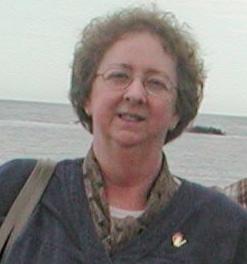

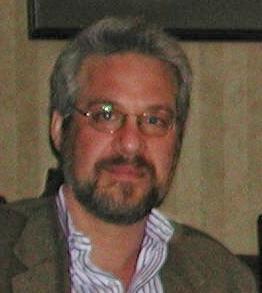
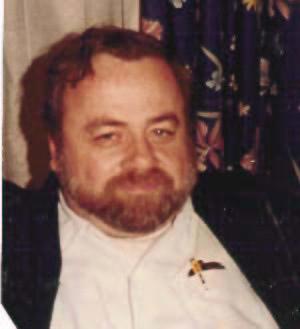
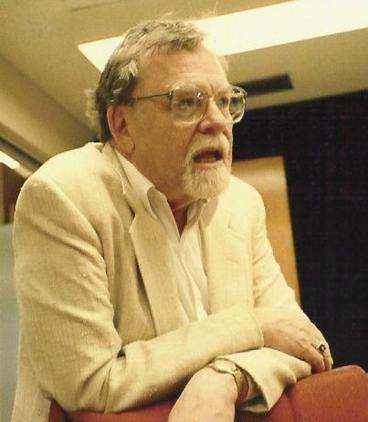
181. Meehl, P. E. (2004) What's in a taxon? Journal of Abnormal Psychology, 113, pp. 39-43.
176. --- (2001) Comorbidity and taxometrics. Clinical Psychology: Science and Practice, 8, 507-519.
174. --- (1999) Clarifications about taxometric method. Journal of Applied and Preventive Psychology, 8, 165-174. Reprinted: 2006, in #184 A Paul Meehl Reader: Essays on the practice of scientific psychology (pp. 389-404). (N.G. Waller, L.J. Yonce, W.M. Grove, D. Faust, & M.F. Lenzenweger, Eds.). Mahwah, NJ: Erlbaum.
170. Waller, N. G., & Meehl, P. E. (1998) Multivariate taxometric procedures: Distinguishing types from continua. Newbury Park, CA: Sage. [Available from Sage Publications]
166. --- (1996) MAXCOV pseudotaxonicity. American Psychologist, 51, 1184-1186. [Reply to Miller]
165. Meehl, P. E., & Yonce, L. J. (1996) Taxometric analysis: II. Detecting taxonicity using covariance of two quantitative indicators in successive intervals of a third indicator (MAXCOV procedure). Psychological Reports, 78, 1091-1227. (This large monograph may also been viewed as 165 MAXCOV_text_only and 165 MAXCOV_appendices. See both links for the complete monograph.)
163. --- (1995) Extension of the MAXCOV-HITMAX taxometric procedure to situations of sizeable nuisance covariance. In D. Lubinski and R. V. Dawis (Eds.), Assessing individual differences in human behavior: New concepts, methods, and findings (pp. 81-92). Palo Alto, CA: Davies-Black.
162. --- (1995) Bootstraps taxometrics: Solving the classification problem in psychopathology. American Psychologist, 50, 266-275.
Reprinted: 2006 in #184 A Paul Meehl Reader: Essays on the practice of scientific psychology (pp. 371-387). (N.G. Waller, L.J. Yonce, W.M. Grove, D. Faust, & M.F. Lenzenweger, Eds.). Mahwah, NJ: Erlbaum.
160. Meehl, P. E., & Yonce, L. J. (1994) Taxometric analysis: I. Detecting taxonicity with two quantitative indicators using means above and below a sliding cut (MAMBAC procedure). Psychological Reports, 74, 1059-1274. (This large monograph may also been viewed as 160_MAMBAC_text_only and 160_MAMBAC_appendices. See both links for the complete monograph.)
159. Grove, W. M., & Meehl, P. E. (1993) Simple regression-based procedures for taxometric investigations. Psychological Reports, 73, 707-737.
150. --- (1992) Factors and taxa, traits and types, differences of degree and differences in kind. Journal of Personality, 60, 117-174. [Additional remarks by Meehl replying to a memo from L. R. Goldberg]
Reprinted: 2006, in #184 A Paul Meehl Reader: Essays on the practice of scientific psychology (pp. 331-370). (N.G. Waller, L.J. Yonce, W.M. Grove, D. Faust, & M.F. Lenzenweger, Eds.). Mahwah, NJ: Erlbaum.
130. --- (1986). Diagnostic taxa as open concepts: Metatheoretical and statistical questions about reliability and construct validity in the grand strategy of nosological revision. In T. Millon & G. L. Klerman (Eds.), Contemporary directions in psychopathology (pp. 215-231). New York: Guilford Press.
Reprinted: 2010, in T. Millon, R. F. Krueger, & E. Simonsen (Eds.), Contemporary directions in psychopathology: Scientific foundations of the DSM-V and ICD-11 (pp. 174-186). New York: Guilford Press.
122. Meehl, P. E., & Golden, R. (1982). Taxometric methods. In P. Kendall & J. Butcher (Eds.), Handbook of research methods in clinical psychology (pp. 127-181). New York: Wiley.
119. Golden, R., & Meehl, P. E. (1980). Detection of biological sex: An empirical test of cluster methods. Multivariate Behavioral Research, 15, 475-496.
118. --- (1979). A funny thing happened to us on the way to the latent entities. Journal of Personality Assessment, 43, 563-581.
117. Golden, R., & Meehl, P. E. (1979). Detection of the schizoid taxon with MMPI indicators. Journal of Abnormal Psychology, 88, 217-233.
112. Golden, R., & Meehl, P. E. (1978). Testing a single dominant gene theory without an accepted criterion variable. Annals of Human Genetics London, 41, 507-514.
104. Golden, R., Tyan, S., & Meehl, P. E. (1974). Detecting latent clinical taxa, IX: A Monte Carlo method for testing taxometric theories (Report No. PR-74-7). Minneapolis: University of Minnesota, Research Laboratories of the Department of Psychiatry. [Appendix B is very large; you may also view Text only or Appendices only.]
103. Golden, R., & Meehl, P. E. (1974). Detecting latent clinical taxa, VIII: A preliminary study in the detection of the schizoid taxon using MMPI items as indicators (Report No. PR-74-6). Minneapolis: University of Minnesota, Research Laboratories of the Department of Psychiatry.
102. Golden, R., Tyan, S., & Meehl, P. E. (1974). Detecting latent clinical taxa, VII: Maximum likelihood solution and empirical and artificial data trials of the multi-indicator multitaxonomic class normal theory (Report No. PR-74-5). Minneapolis: University of Minnesota, Research Laboratories of the Department of Psychiatry.
101. Golden, R., Tyan, S., & Meehl, P. E. (1974). Detecting latent clinical taxa, VI: Analytical development and empirical trials of the consistency hurdles theory (Report No. PR-74-4). Minneapolis: University of Minnesota, Research Laboratories of the Department of Psychiatry.
098. --- (1973). MAXCOV-HITMAX: A taxonomic search method for loose genetic syndromes. In #97 Psychodiagnosis: Selected papers (pp. 200-224). Minneapolis: University of Minnesota Press.
096. Golden, R., & Meehl, P. E. (1973). Detecting latent clinical taxa, V: A Monte Carlo study of the maximum covariance method and associated consistency tests (Report No. PR-73-3). Minneapolis: University of Minnesota, Research Laboratories of the Department of Psychiatry.
095. Golden, R., & Meehl, P. E. (1973). Detecting latent clinical taxa, IV: Empirical study of the maximum covariance method and the normal minimum chi-square method, using three MMPI keys to identify the sexes (Report No. PR-73-2). Minneapolis: University of Minnesota, Research Laboratories of the Department of Psychiatry.
079. Meehl, P. E., Lykken, D. T., Burdick, M. R., & Schoener, G. R. (1969). Identifying latent clinical taxa, III. An empirical trial of the normal single-indicator method, using MMPI Scale 5 to identify the sexes (Report No. PR-69-1). Minneapolis: University of Minnesota, Research Laboratories of the Department of Psychiatry.
076. --- (1968). Detecting latent clinical taxa, II: A simplified procedure, some additional hitmax cut locators, a single indicator method, and miscellaneous theorems (Report No. PR-68-4). Minneapolis: University of Minnesota, Research Laboratories of the Department of Psychiatry.
070. Dawes, R. M., & Meehl, P. E. (1966). Mixed group validation: A method for determining the validity of diagnostic signs without using criterion groups. Psychological Bulletin, 66, 63-67.
Reprinted: 1973, in #97 Psychodiagnosis: Selected papers (pp. 156-164). Minneapolis: University of Minnesota Press.
065. --- (1965). Detecting latent clinical taxa by fallible quantitative indicators lacking an accepted criterion (Report No. PR-65-2). Minneapolis: University of Minnesota, Research Laboratories of the Department of Psychiatry.
Philosophy-General
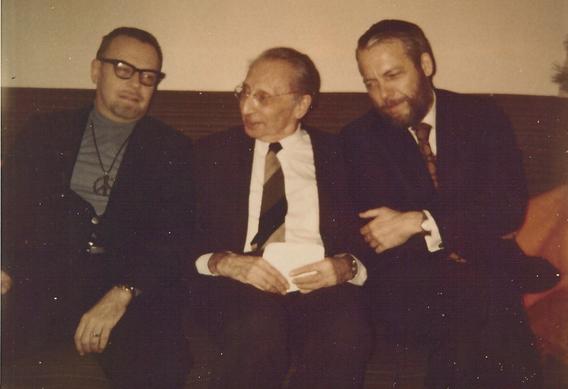
161. --- (1995) Utiles, hedons, and the mind-body problem, or, who's afraid of Vilfredo? In P. E. Shrout & S. Fiske (Eds.), Personality research, methods, and theory: A Festschrift for Donald Fiske (pp. 45-66). Hillsdale, NJ: Erlbaum.
153. --- (1992) The Miracle Argument for realism: An important lesson to be learned by generalizing from Carrier's counterexamples. Studies in History and Philosophy of Science, 23, 267-282.
142. --- (1989). Psychological determinism or chance: Configural cerebral autoselection as a tertium quid. In M. L. Maxwell & C. W. Savage (Eds.), Science, mind, and psychology: Essays in honor of Grover Maxwell (pp. 211-255). Lanham, MD: University Press of America.
Reprinted: 1991, in Meehl, Selected philosophical and methodological papers (pp. 136-168; C. A. Anderson and K. Gunderson, Eds.). Minneapolis: University of Minnesota Press.
100. Feigl, H. & Meehl, P. E. (1974). The determinism-freedom and mind-body problems. In P. A. Schilpp (Ed.), The philosophy of Karl Popper (pp. 520-559). LaSalle, IL: Open Court.
Reprinted: 1991, in Meehl, Selected philosophical and methodological papers (pp. 97-135; C. A. Anderson and K. Gunderson, Eds.). Minneapolis: University of Minnesota Press.
083. --- (1970). Psychological determinism and human rationality: A psychologist's reactions to Professor Karl Popper's 'Of clouds and clocks.' In M. Radner & S. Winokur (Eds.), Minnesota studies in the philosophy of science: Vol. IV. Analyses of theories and methods of physics and psychology (pp. 310-372). Minneapolis: University of Minnesota Press.
Reprinted: 1991, in Meehl, Selected philosophical and methodological papers (pp. 43-96; C. A. Anderson and K. Gunderson, Eds.). Minneapolis: University of Minnesota Press.
069. --- (1966). The compleat autocerebroscopist: A thought experiment on Professor Feigl's mind-body identity thesis. In P. K. Feyerabend & G. Maxwell (Eds.), Mind, matter, and method: Essays in philosophy and science in honor of Herbert Feigl (pp. 103-180). Minneapolis: University of Minnesota Press.
Reprinted: 1991, in Meehl, Selected philosophical and methodological papers (pp. 184-248; C. A. Anderson and K. Gunderson, Eds.). Minneapolis: University of Minnesota Press.
057. --- (1962). Psychopathology and purpose. In P. Hoch & J. Zubin (Eds.), The future of psychiatry (pp. 61-69). New York: Grune and Stratton.
Reprinted: 1991, in Meehl, Selected philosophical and methodological papers (pp. 265-271; C. A. Anderson and K. Gunderson, Eds.). Minneapolis: University of Minnesota Press.
MEMO to Herbert Feigl: Prolegomena to post-positivist ethics. (1976/1993).
Philosophy of Science
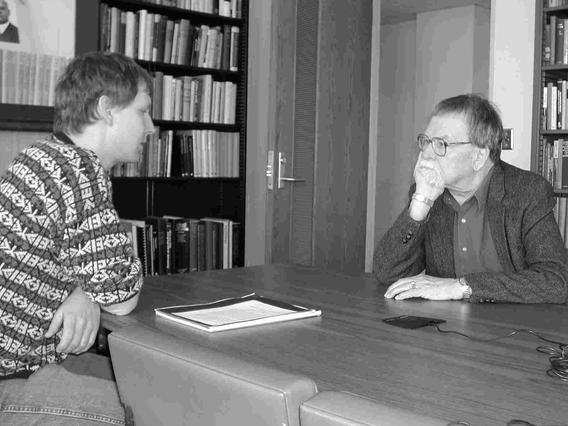
185. Meehl, P. E. (2006). The power of quantitative thinking. In N.G. Waller, L.J. Yonce, W.M. Grove, D. Faust, & M.F. Lenzenweger (Eds.), A Paul Meehl Reader: Essays on the practice of scientific psychology (pp. 433-444). Mahwah, NJ: Erlbaum.
172. --- (1998) Relevance of a scientist's ideology in communal recognition of scientific merit. Psychological Reports, 83, 1123-1144.
157. --- (1993) Philosophy of science: Help or hindrance? Psychological Reports, 72, 707-733.
Reprinted: 2006, in #184 A Paul Meehl Reader: Essays on the practice of scientific psychology (pp. 411-431). (N.G. Waller, L.J. Yonce, W.M. Grove, D. Faust, & M.F. Lenzenweger, Eds.). Mahwah, NJ: Erlbaum.
148. --- (1991). Selected philosophical and methodological papers (C. A. Anderson and K. Gunderson, Eds.). Minneapolis: University of Minnesota Press. [This book may be ordered from the University of Minnesota Press]
147. --- (1990). Appraising and amending theories: The strategy of Lakatosian defense and two principles that warrant using it. Psychological Inquiry, 1, 108-141, 173-180.
Reprinted: 2006, in #184 A Paul Meehl Reader: Essays on the practice of scientific psychology (pp. 91-167). (N.G. Waller, L.J. Yonce, W.M. Grove, D. Faust, & M.F. Lenzenweger, Eds.). Mahwah, NJ: Erlbaum.
146. --- (1990). Corroboration and verisimilitude: Against Lakatos' "sheer leap of faith" (Working Paper, MCPS-90-01). Minneapolis: University of Minnesota, Center for Philosophy of Science.
128. --- (1986). What social scientists don't understand. In D. W. Fiske & R. A. Shweder (Eds.), Metatheory in social science: Pluralisms and subjectivities (pp. 315-338). Chicago: University of Chicago Press.
125. --- (1983). Consistency tests in estimating the completeness of the fossil record: A neo-Popperian approach to statistical paleontology. In J. Earman (Ed.), Minnesota studies in the philosophy of science: Vol. X, Testing scientific theories (pp. 413-473). Minneapolis: University of Minnesota Press.
124. --- (1983). Subjectivity in psychoanalytic inference: The nagging persistence of Wilhelm Fliess's Achensee question. In J. Earman (Ed.), Minnesota studies in the philosophy of science: Vol. X, Testing scientific theories (pp. 349-411). Minneapolis: University of Minnesota Press.
Reprinted: 1991, in Meehl, Selected philosophical and methodological papers (pp. 284-337; C. A. Anderson and K. Gunderson, Eds.). Minneapolis: University of Minnesota Press. 1994, Psychoanalysis and Contemporary Thought, 17, 3-82.
085. --- (1970). Some methodological reflections on the difficulties of psychoanalytic research. In M. Radner & S. Winokur (Eds.), Minnesota studies in the philosophy of science: Vol. IV. Analyses of theories and methods of physics and psychology (pp. 403-416). Minneapolis: University of Minnesota Press.
Reprinted: 1973, Psychological Issues, 8, 104-115. 1991, in Meehl, Selected philosophical and methodological papers (pp. 272-283; C. A. Anderson and K. Gunderson, Eds.). Minneapolis: University of Minnesota Press, 1991.
067. --- (1965). Philosophy of science and Christian theology. In J. Bodensieck (Ed.), Encyclopedia of the Lutheran Church (Vol. 3, pp. 1894-1896). Minneapolis: Augsburg Publishing House.
040. Meehl, P. E., & Sellars, W. (1956). The concept of emergence. In H. Feigl & M. Scriven (Eds.), Minnesota studies in the philosophy of science: Vol. I. The foundations of science and the concepts of psychology and psychoanalysis (pp. 239-252). Minneapolis: University of Minnesota Press.
Reprinted: 1991, in Meehl, Selected philosophical and methodological papers (pp. 171-183; C. A. Anderson and K. Gunderson, Eds.). Minneapolis: University of Minnesota Press.
037. Meehl, P. E., & Scriven, M. J. (1956). Compatibility of science and ESP. Science, 123, 14-15.
Reprinted: 1991, in Meehl, Selected philosophical and methodological papers (pp. 497-499; C. A. Anderson and K. Gunderson, Eds.). Minneapolis: University of Minnesota Press.
017. --- (1950). A most peculiar paradox. Philosophical Studies, 1, 47-48.
Reprinted: 1991, in Meehl, Selected philosophical and methodological papers (pp. 169-170; C. A. Anderson and K. Gunderson, Eds.). Minneapolis: University of Minnesota Press.
016. --- (1950). On the circularity of the Law of Effect. Psychological Bulletin, 47, 52-75.
Reprinted as "Law and convention in psychology" in H. Feigl and M. Brodbeck (eds), Readings in the philosophy of science (pp. 637-659), New York: Appleton-Century-Crofts, 1953.
Cliometric Metatheory

182. Meehl,P. E. (2004) Cliometric metatheory III: Peircean consensus, verisimilitude, and asymptotic method. British Journal for the Philosophy of Science, 55, 615-643.
180. Meehl, P. E. (2002) Cliometric metatheory II: Criteria scientists use in theory appraisal and why it is rational to do so. Psychological Reports, 91, 339-404.
179. Faust, D., & Meehl, P. E. (2002) Using meta-scientific studies to clarify or resolve questions in the philosophy and history of science. Philosophy of Science, 69, S185-S196.
178. Waller, N. G., & Meehl, P. E. (2002) Risky tests, verisimilitude, and path analysis. Psychological Methods, 7, 323-337.
177. Meehl, P. E., & Waller, N. G. (2002) The path analysis controversy: A new statistical approach to strong appraisal of verisimilitude. Psychological Methods, 7, 283-300.
Reprinted: 2010, in Stephen Turner, Causality (Volume 4). Newbury Park, CA: Sage (Benchmarks in Social Research Methods series).
173. --- (1999) How to weight scientists' probabilities is not a big problem: Comment on Barnes. British Journal for the Philosophy of Science, 50, 283-295.
154. --- (1992) Cliometric metatheory: The actuarial approach to empirical, history-based philosophy of science. Psychological Reports, 71, 339-467.
153. --- (1992) The Miracle Argument for realism: An important lesson to be learned by generalizing from Carrier's counterexamples. Studies in History and Philosophy of Science, 23, 267-282.
152. Faust, D., & Meehl, P. E. (1992) Using scientific methods to resolve enduring questions within the history and philosophy of science: Some illustrations. Behavior Therapy, 23, 195-211.
Significance Testing
169. --- (1997) The problem is epistemology, not statistics: Replace significance tests by confidence intervals and quantify accuracy of risky numerical predictions. In L. L. Harlow, S. A. Mulaik, & J.H. Steiger (Eds.), What if there were no significance tests? (pp. 393-425). Mahwah, NJ: Erlbaum.
147. --- (1990). Appraising and amending theories: The strategy of Lakatosian defense and two principles that warrant using it. Psychological Inquiry, 1, 108-141, 173-180.
Reprinted: 2006, in #184 A Paul Meehl Reader: Essays on the practice of scientific psychology (pp. 91-167). (N.G. Waller, L.J. Yonce, W.M. Grove, D. Faust, & M.F. Lenzenweger, Eds.). Mahwah, NJ: Erlbaum.
144. --- (1990). Why summaries of research on psychological theories are often uninterpretable. Psychological Reports, 66, 195-244. Also in R. E. Snow & D. Wiley (Eds.), Improving Inquiry in social science: A volume in honor of Lee J. Cronbach (pp. 13-59). Hillsdale, NJ: Lawrence Erlbaum Associates, 1991.
Reprinted: 2006, in #184 A Paul Meehl Reader: Essays on the practice of scientific psychology (pp. 445-486). (N.G. Waller, L.J. Yonce, W.M. Grove, D. Faust, & M.F. Lenzenweger, Eds.). Mahwah, NJ: Erlbaum.
113. --- (1978). Theoretical risks and tabular asterisks: Sir Karl, Sir Ronald, and the slow progress of soft psychology. Journal of Consulting and Clinical Psychology, 46, 806-834.
Reprinted: 1991, in Meehl, Selected philosophical and methodological papers (pp. 1-43; C. A. Anderson and K. Gunderson, Eds.). Minneapolis: University of Minnesota Press.
2004, Applied & Preventive Psychology, 11, 1-22.
2006, in #184 A Paul Meehl Reader: Essays on the practice of scientific psychology (pp. 57-90). (N.G. Waller, L.J. Yonce, W.M. Grove, D. Faust, & M.F. Lenzenweger, Eds.). Mahwah, NJ: Erlbaum.
074. --- (1967). Theory-testing in psychology and physics: A methodological paradox. Philosophy of Science, 34, 103-115.
Reprinted: 1970, in D. E. Morrison & R. E. Henkel (Eds.), The significance test controversy (pp. 252-266). Chicago: Aldine.
Psychology and the Law
171. Janus, E., & Meehl, P. E. (1997) Assessing the legal standard for predictions of dangerousness in sex offender commitment proceedings. Psychology, Public Policy, and Law, 3, 33-64.
141. --- (1989). Law and the fireside inductions (with Postscript): Some reflections of a clinical psychologist. Behavioral Sciences and the Law, 7, 521-550.
Reprinted: 1991, in Meehl, Selected philosophical and methodological papers (pp. 440-480; C. A. Anderson and K. Gunderson, Eds.). Minneapolis: University of Minnesota Press.
123. --- (1983). The insanity defense. Minnesota Psychologist, 32 (Summer), 11-17.
Reprinted: 1991, in Meehl, Selected philosophical and methodological papers (pp. 481-496; C. A. Anderson and K. Gunderson, Eds.). Minneapolis: University of Minnesota Press.
089. --- (1971). Law and the fireside inductions: Some reflections of a clinical psychologist. Journal of Social Issues, 27, 65-100.
Reprinted: 1977, in J. L. Tapp and F. J. Levine (Eds.), Law, justice, and the individual in society: Psychological and legal issues (pp. 10-28). New York: Holt, Rinehart & Winston.
(Later publication 1989 with added Postscript, see #141.)
082. --- (1970). Psychology and the criminal law. University of Richmond Law Review, 5, 1-30.
Reprinted in Meehl, Selected philosophical and methodological papers (pp. 416-439; C. A. Anderson and K. Gunderson, Eds.). Minneapolis: University of Minnesota Press, 1991.
077. Livermore, J. M., Malmquist, C. P., & Meehl, P. E. (1968). On the justifications for civil commitment. University of Pennsylvania Law Review, 117, 75-96.
Reprinted in Meehl, Selected philosophical and methodological papers (pp. 395-415; C. A. Anderson and K. Gunderson, Eds.). Minneapolis: University of Minnesota Press.
073. Livermore, J. M., & Meehl, P. E. (1967). The virtues of M'Naghten. Minnesota Law Review, 51, 789-856.
Reprinted: 1991, in Meehl, Selected philosophical and methodological papers (pp. 338-394, C. A. Anderson and K. Gunderson, Eds.). Minneapolis: University of Minnesota.
Political Psychology
110. --- (1977). The selfish voter paradox and the thrown-away vote argument. American Political Science Review, 71, 11-30.
108. --- (1976). Difficulties with economic models of voter behavior (Report No. PR-76-1). Minneapolis: University of Minnesota, Research Laboratories of the Department of Psychiatry.
Psychology of Religion
067. --- (1965). Philosophy of science and Christian theology. In J. Bodensieck (Ed.), Encyclopedia of the Lutheran Church (Vol. 3, pp. 1894-1896). Minneapolis: Augsburg Publishing House.
045. Meehl, P. E., Klann, R., Schmieding, A., Breimeier, K., & Schroeder-Slomann, S. (1958). What, then, is Man? St. Louis: Concordia Publishing House. [Not available as a reprint]
042. --- (1957). Religion and the maintenance of mental health. In Society's stake in mental health (pp. 52-61). Minneapolis: University of Minnesota, Social Science Research Center.
Parapsychology
116. --- (1978). Precognitive telepathy II: Some neurophysiological conjectures and metaphysical speculations. NOÛS, 12, 371-395.
Reprinted: 1991, in Meehl, Selected philosophical and methodological papers (pp. 526-544; C. A. Anderson and K. Gunderson, Eds.). Minneapolis: University of Minnesota Press.
115. --- (1978). Precognitive telepathy I: On the possibility of distinguishing it experimentally from psychokinesis. NOÛS, 12, 235-266.
Reprinted: 1991, in Meehl, Selected philosophical and methodological papers (pp. 500-525; C. A. Anderson and K. Gunderson, Eds.). Minneapolis: University of Minnesota Press, 1991.
056. --- (1962). Parapsychology. Encyclopedia Britannica, 17, 267-269.
037. Meehl, P. E., & Scriven, M. J. (1956). Compatibility of science and ESP. Science, 123, 14-15.
Reprinted: 1991, in Meehl, Selected philosophical and methodological papers (pp. 497-499; C. A. Anderson and K. Gunderson, Eds.). Minneapolis: University of Minnesota Press.
[a PEM grouping, try to figure a catgory name?]
175. --- (2001) Primary and secondary hypohedonia. Journal of Abnormal Psychology, 110, 188-193.
161. --- (1995) Utiles, hedons, and the mind-body problem, or, who's afraid of Vilfredo? In P. E. Shrout & S. Fiske (Eds.), Personality research, methods, and theory: A Festschrift for Donald Fiske (pp. 45-66). Hillsdale, NJ: Erlbaum.
151. --- (1992) Needs (Murray, 1938) and state-variables (Skinner, 1938). Psychological Reports, 70, 407-450.
136. --- (1987). 'Hedonic capacity' ten years later: Some clarifications. In D. C. Clark & J. Fawcett (Eds.), Anhedonia and affect deficit states (pp. 47-50). New York: PMA Publishing.
129. --- (1986). Trait language and behaviorese. In T. Thompson & M. D. Zeiler (Eds.), Analysis and integration of behavioral units (pp. 315-334). Hillsdale, NJ: Erlbaum.
106. --- (1975). Hedonic capacity: Some conjectures. Bulletin of the Menninger Clinic, 39, 295-307. Reprinted: 1987, in D. C. Clark & J. Fawcett (Eds.), Anhedonia and affect deficit states (pp. 33-45). New York: PMA Publishing.
057. --- (1962). Psychopathology and purpose. In P. Hoch & J. Zubin (Eds.), The future of psychiatry (pp. 61-69). New York: Grune and Stratton. Reprinted: 1991, in Meehl, Selected philosophical and methodological papers (pp. 265-271; C. A. Anderson and K. Gunderson, Eds.). Minneapolis: University of Minnesota Press.
029. MacCorquodale, K., & Meehl, P. E. (1953). Preliminary suggestions as to a formalization of expectancy theory. Psychological Review, 60, 55-63.
016. --- (1950). On the circularity of the Law of Effect. Psychological Bulletin, 47, 52-75. Reprinted as "Law and convention in psychology" in H. Feigl and M. Brodbeck (eds), Readings in the philosophy of science (pp. 637-659), New York: Appleton-Century-Crofts, 1953.
Not categorized
184. Meehl, P. E. (2006). A Paul Meehl Reader: Essays on the practice of scientific psychology. (N.G. Waller, L.J. Yonce, W.M. Grove, D. Faust, & M.F. Lenzenweger, Eds.). Mahwah, NJ: Erlbaum. [This book may be ordered from Rutledge] Contents and Preface
183. Peterson, D. R. (2005) Twelve years of correspondence with Paul Meehl: Tough notes from a gentle genius. Erlbaum. [This book may be ordered from Rutledge]
139. --- (1989). Autobiography. In G. Lindzey (Ed.), History of psychology in autobiography, Vol. VIII (pp. 337-389). Stanford, CA: Stanford University Press. (version including initial dictation)
107. --- (1975). Control and countercontrol: A panel discussion. In T. Thompson & W. S. Dockens (Eds.), Applications of behavior modification (pp. 509-521). New York: Academic Press.
097. --- (1973). Psychodiagnosis: Selected papers. Minneapolis: University of Minnesota Press. Available from Univ. of Minnesota Press
081. Gazzaniga, M. S. (1969, June). Violent man--A seven-way conversation (with D. Premack, L. Festinger, S. Schachter, R. L. Sinsheimer, P. E. Meehl, and K. M. Colby). Psychology Today, pp. 52-54, 59-60, 62-63.
068. Lykken, D. T., & Meehl, P. E. (1966). Contributions to the problem of evaluating autonomic response data: I (Report No. PR-66-2). Minneapolis: University of Minnesota, Research Laboratories of the Department of Psychiatry.
066. --- (1965). The creative individual: Why it is hard to identify him. In G. A. Steiner (Ed.), The creative organization (pp. 25-32). Chicago: University of Chicago Press.
044. Fleeson, W., Glueck, B. C., Heistad, G., King, J. E., Lykken, D. T., Meehl, P. E., & Mena, A. (1958). The ataraxic effect of two phenothiazine drugs on an outpatient population.University of Minnesota Medical Bulletin, 29, 274-286.
005. Meehl, P. E., & Jeffery, M. (1946). The Hunt-Minnesota Test for Organic Brain Damage in cases of functional depression. Journal of Applied Psychology, 30, 276-287.